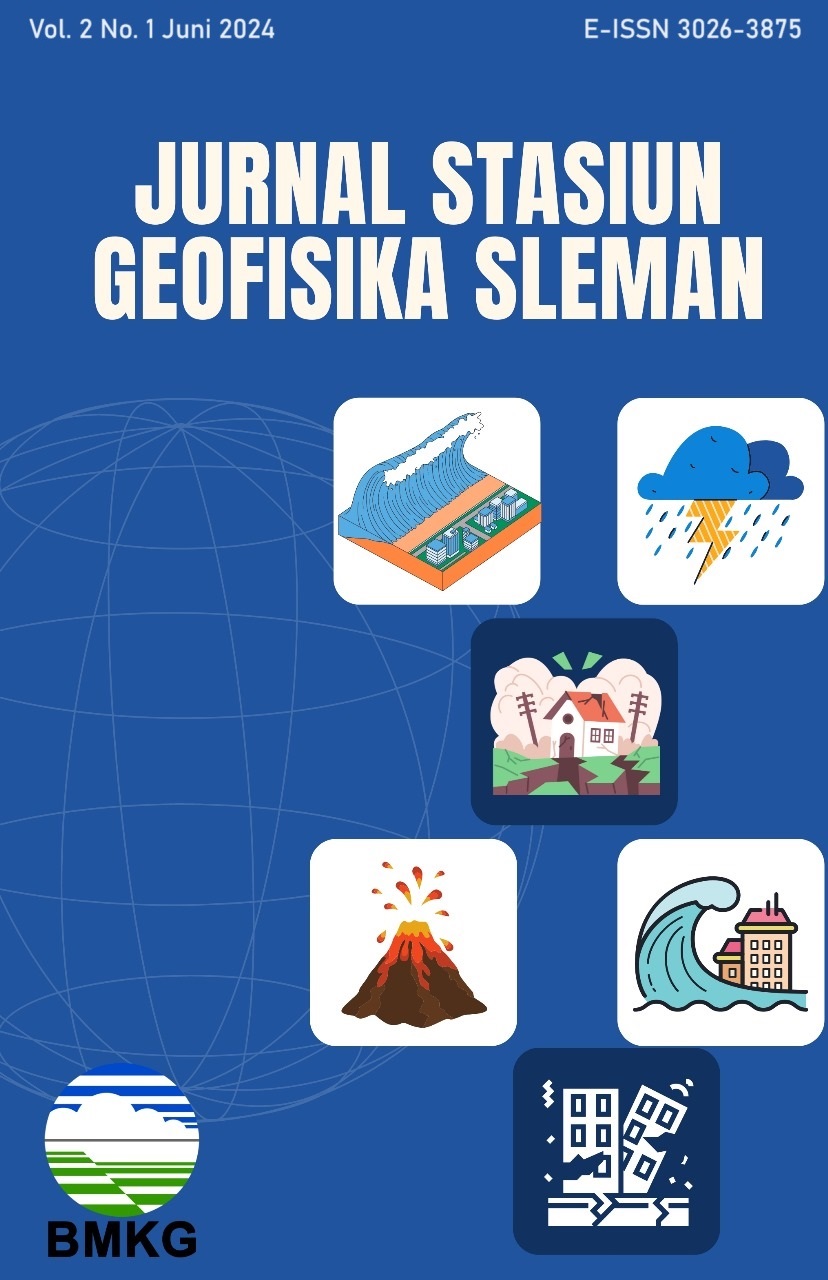Analisis Waktu Berakhirnya Gempa Bumi Susulan Menggunakan Metode Mogi II dan Utsu (Studi Kasus Gempa Bumi Bantul 30 Juni 2023)
Keywords:
Peluruhan gempa bumi susulan, Mogi, Utsu, Koefisien KorelasiAbstract
An earthquake with a large magnitude, such as the Bantul earthquake on June 30, 2023, has the potential to trigger aftershocks. This study aims to determine the time required to reach the stability of energy release from the earthquake, compare the decay of aftershocks using the Mogi II and Utsu methods, and identify the most accurate method for predicting the end of aftershocks based on observational data. The data used are recordings of the Bantul earthquake from SeisComP4, which were then analyzed using the equations of each method. The analysis results show differences in the end time of aftershocks (t) and correlation coefficients (r) between the two methods. The Utsu method indicates the end of aftershocks on August 4, 2023, with a correlation coefficient close to -1, indicating strong interpretation, while the Mogi II method estimates the end of aftershocks on July 29, 2023. The Utsu method is closer to the observational results, which show that the aftershocks ended on the 32nd day after the main earthquake, on July 31, 2023.
Downloads
Downloads
Published
How to Cite
Issue
Section
License
Copyright (c) 2024 Erni Asanti, Dwi Budi Susanti, Lusia Silfia Pulo Boli

This work is licensed under a Creative Commons Attribution-ShareAlike 4.0 International License.











